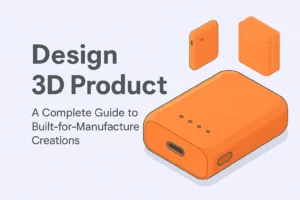Meta Description: Design product management is more than just juggling tasks—it’s the art of translating creative vision into scalable, manufacturable, and user-ready products.
There’s a gap no one talks about in hardware teams.
Design wants delight. Engineering wants tolerances. Marketing wants it yesterday.
And in the middle, often alone, stands the product manager—trying to make sense of it all.
But what happens when design is the product? When the shape, feel, and finish aren’t decoration—but function? That’s where design product management becomes its own discipline.
Not Just Project Management. Not Just UX. Something in Between.
Let’s be clear: traditional product management is often about backlog grooming, stakeholder alignment, and release schedules. Important, yes. But insufficient when you’re building physical things that must survive drops, heat, rain, and real people.
Design product management is a fusion role. It’s where brand story, CMF (color/material/finish), user experience, and factory feasibility must be considered at the same time.
You’re not just asking, “Can we build it?”
You’re also asking, “Will they love it—and will it survive UPS?”
The 3 Silent Jobs of a Design Product Manager
- Holding the Design Vision
You protect the core “why” of the product—when others want to cut corners or default to safe. - Translating Between Departments
You explain to engineers why a 0.5mm fillet matters, and to designers why a single screw change adds $0.30 to BOM at scale. - Watching the Timeline and the Texture
You’re checking the calendar, sure. But also checking whether the matte black coating came out too glossy from the third vendor.
What Makes Design Product Management So Hard (and So Worth It)
Unlike apps or websites, physical products get locked in. Once you commit to a mold, it’s expensive to go back.
You don’t get infinite sprints. You get one shot—maybe two. And the product has to just work.
Design product managers live in that pressure. But they also get to:
- Touch the thing they helped shape
- Talk to users holding it in real life
- Influence something real, not just digital
And that makes the fight worth it.
The Best Ones I’ve Met Share These Traits:
- They speak CAD, CMF, cost, and customer—fluently
- They love sketches, but sleep better with spreadsheets
- They know how to say “no” without killing the idea
- They ask, constantly: Does this choice still reflect our promise?
Final Thought
As more startups build physical products—not just software—the need for design product management is growing.
It’s not a formal title in most org charts. But it’s a vital function. Because if no one is managing the design side of product reality, you don’t just lose polish—you lose purpose.
If you’re building something that users will touch, hold, wear, or interact with—don’t leave design to chance. And don’t expect the engineers to carry the vision alone.
Someone has to hold the thread.
That someone is the design product manager.
📩 At WokooDesign, we partner with startups and brands not just to design products—but to manage that delicate dance between vision and reality. If you need help bridging that gap, we’d love to talk.


